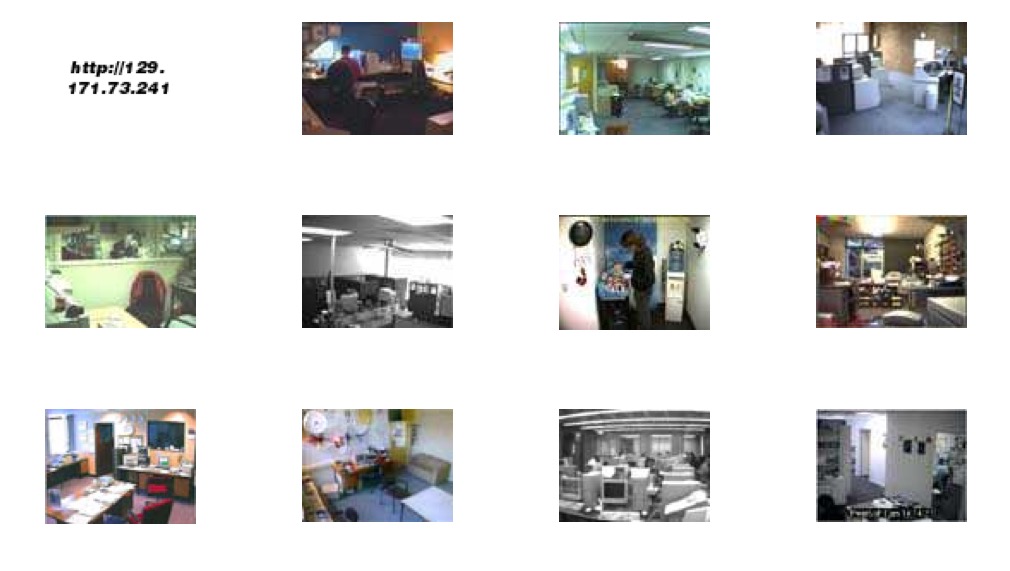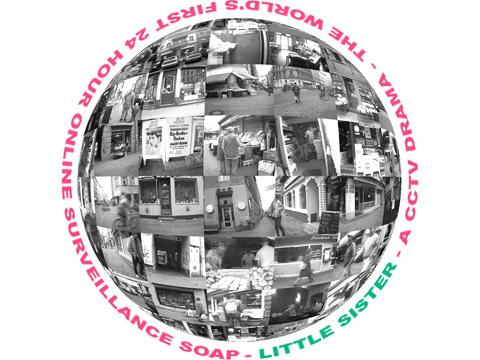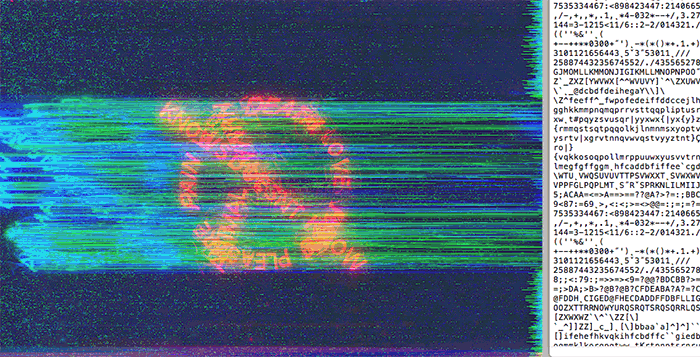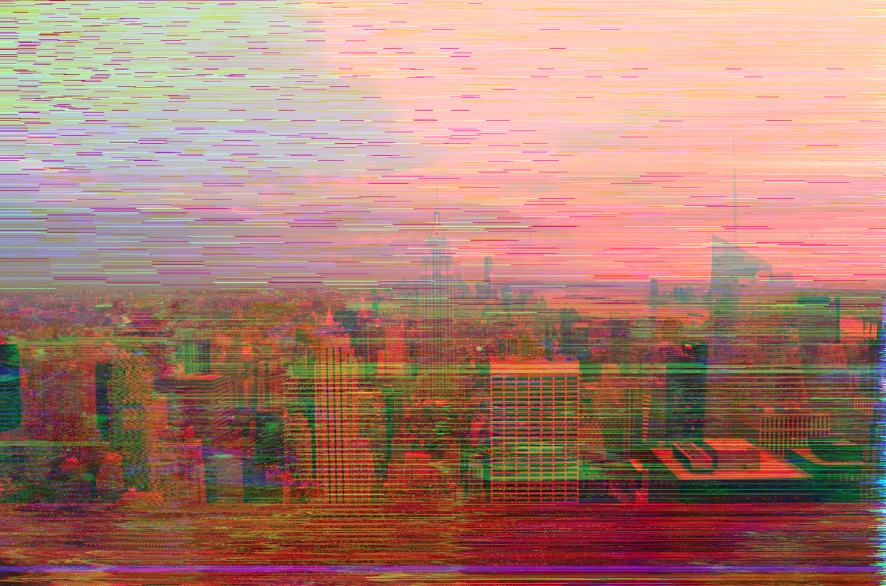Private vs Public
Description
Week 8: October 8 – 21
Global communication has challenged and penetrated all previous notions of the divide between public and private space. We’ll take a critical look at mobile media, webcam technology, reality TV, surveillance, self-publishing, and social media, concerning the loss of the private, the commodification of personal demographics, and the changing nature of social relations in the virtual community. How have artists exploited issues of privacy and Big Data to offer a critique of these sometimes dangerous practices, which permeate the lives of everyone who engages in social media and other forms of telecommunications? As our personal lives become increasingly public, exposed, and sometimes exploited, how can we develop a critical stance on these developments and incorporate thoughtful criticism into our artistic investigations. Location: Adobe Connect
Assignments
Due Two Weeks: Thursday, October 22
1 – Project Hyperessay
During the next week you first write the Project Hyperessay #1: Concept, take a look at the assignment on the Project Hyperessay page for further details. Create a new category, “Project Hyperessay,” and assign it to this post.
2 – Project Presentation
From the Project Hyperessay, distill the media and ideas into a Powerpoint presentation and email to me no later than one hour before class begins next week. Be sure it is under 10 megabytes so it can be sent via NTU email. The presentation will be approximately 10 minutes followed by 10 minutes of discussion. There is additional information on the Project Hyperessay page for further details.
Outline
Works for Study
Jennifer Ringley, Jennicam, (1997)
Why live under the eye of the lens? Why expose our everyday lives on the Internet? Is it a critique of the erosion of privacy, an exercise in voyeurism, a need for recognition? Here is a sequence of images from JenniCam (now only accessible through the Internet Archive Wayback Machine), a pioneering project by Jennifer Ringley in which for seven years, she opened up her life to the Internet via Webcam.














Jennifer Ringley was the first artist/designer/performer to situate her life in front of the Webcam. It was 1996 when she formulated the idea, a time when Webcams typically broadcasted traffic, city skylines, or perhaps a fish tank. But never had anyone placed themselves under the microscope, to be viewed as they move about everyday life. JennyCam became a worldwide phenomenon for the seven years she conducted the project. She lived her life in front of the camera: sleeping, eating, dressing, making love, just about all the things that people do in their personal life. Eventually the project drew a huge following, as Ringley setup galleries of camera shots all time stamped. The project evolved with the technology, beginning with still images taken every few seconds, later to real-time video. Ringley’s notion of the project was that she simply wanted to live her life in front of the camera as a site-specific Internet project. It was never clear whether or not her aspirations were as performance, or rather, a self-portrait in time of the most mundane and intimate details of her life.
Jennifer Ringley on the David Letterman Show, 1998
Eva and Franco Mattes, Life Sharing, (2000)
Life Sharing perfectly emulates the idea of the open source studio, taking the idea to an extreme. Why? Because the computer is the artist’s virtual studio, connected to every other computer in the world, it is opened up to the network. And in the case of Life Sharing, the artists, Eva and Franco Mattes, have eradicated all notions of privacy, their computer is 100% public, it is an open door to their virtual lives, nothing is hidden, everything is revealed, except, their true identities, which is hidden or obscured by contradictory information they provide about themselves, including their cryptic domain: http://0100101110101101.org.
Their online world became open source, for the taking. You the viewer are invited to enter into that space and download anything you like. It is a subversive gesture against ownership and privacy with the aim to reveal the dissolving boundaries between private and public.
In January 2001 we started sharing our personal computer through our website. Everything was visible: texts, photos, music, videos, software, operating system, bank statements and even our private email. People could take anything they wanted, including the system itself, since we were using only free software. It was not a normal website, you were entering the computer in our apartment, seeing everything live. It was a sort of endurance performance that lasted 3 years, 24/7.
Email and other online communication of the artists (though there names are disguised) is open source material for the Life Sharing project:

The viewer resides in the computer of the artist. Everything is fair game. Nothing is private, all is open to the world and available for the taking: email, photos, the most personal of items. To extend the Website, they wore a GPS tracking device that displayed their location. They posted all their logs, so every visit was documented transparently on the site. Previously they remixed the work of others, now they make their work available for everyone to remix. More than file sharing, they called it Life Sharing. This was all before social media existed.
From Matthew Mirapaul’s essay in the NY Times:
Living so publicly online is a form of performance art in the digital age.
According to Steve Dietz, former media curator at the Walker Art Center in Minneapolis, who pioneered net art exhibitions in the late 1990s, and who commissioned Life Sharing:
This is open source living in the digital age. It’s making a political statement about ownership and commercialism. It’s not just about viewing. Not only can you see in, but you can use the plans yourself.
They became deeply involved in tracking data flowing in and out of their computer.
Access logs is where you could see how many people were viewing Life Sharing, where they came from, what they were watching, how much time they were spending there etc. etc. We were totally obsessed with traffic logs, waking up in the middle of the night to check “the traffic”






In the case of Life Sharing, the artists have eradicated all notions of privacy, their computer is 100% public, it is an open door to their virtual lives, nothing is hidden, everything is revealed, except, their true identities, which is hidden or obscured by contradictory information they provide about themselves. So they share their lives, their virtual lives, but because it is their virtual selves, it isn’t necessarily who they really are, it is who they pretend to be, or want to be, or want us to think who they are. It is in essence a performance of the digital identity, broadcast on the stage of the desktop.
Eva and Franco Mattes (both born in Italy in 1976) are a duo of artists based in New York. Neither of them received an art education, and since meeting in Madrid in 1994, they have never separated. Operating under the pseudonym 0100101110101101.org, they are counted among the second wave of the Internet artists, after Net.art, and are renowned for their subversion of public media. They are based in Brooklyn, New York, but also travel frequently throughout Europe and the United States.
Hasan Elahi, Tracking Transience 2.0 (2003)
In the post 9/11 climate, on one of his many trips abroad, Hasan Elahi (of Bangladesh descent) was taken aside by airport security as a suspected terrorist. Other than his middle-eastern roots, there was no reason to arrest him. However, the authorities warned him that they would be watching him very closely, regardless of the fact that he was an innocent college professor teaching new media art. Thus began Tracking Transience 2.0, Elahi’s epic work of self-surveillance that continues to this day. Elahi performs 24/7 tracking of his geo-spatial coordinates as an act of self-espionage, giving up his data as a subversive performance that engages and critiques issues of surveillance and privacy. As a professor at the University of Maryland Near Washington, DC, his proximity is broadcast to the world for all to see.
Elahi decided, as an act of confrontation and artistic mediation, to prove to the authorities that he could do a much better job of tracking himself than they ever could. You could call it data camouflage. Elahi began to photograph and time stamp his every meal, every airport, every bathroom, every toilet, every hotel bed and posted the photos online, defiantly, abundantly.





Now the authorities would know everything and nothing about Hasan Elahi. He would maintain his own profile and dossier that is more evasive than ever. A performance? I suspect so. It is a dance around 21st surveillance and overwrought security. But it is also a critique of the millions, in fact billions of individuals who willingly and gladly give up their data everyday. And who have no idea where it goes and how it is used.
As Hal Niedzvincki claims, we live in a peep society: we peep on each other, we peep on ourselves. Now, with Elahi, you can selectively give up your data as a screen to hide your real life from those who would use it for their own gain, or use it against you. If in fact Marcel Duchamp unveiled the toilet as a “readymade” work of art by sheer force of the artist intent, Elahi has given us the toilet as an object of everyday life that renders himself, the artist, anonymous. Not only is he effacing his artistic self, he has become just another face in the crowd. This is art as camouflage mimicking objects as lifeless, nondescript entities that reveal absolutely nothing about the artist sharing the objects.
Perhaps this is a critique on the saturation of self-documentation, all of us who wield our cameras and cell phones taking photographs of everything and anything. Why? Because we don’t want to forget, the media carries a sense of purpose through memory, an archive of one’s life, preservation of the moment. When I presented Hasan with my documentation of his documentation, he could remember every place where each and every photo had been taken. Each of these images, no matter how empty (and his photos are typically void of people), no matter the sameness, brought back to him a specific moment in time and space. That is the life recorded and remembered through media representation.
So who is tracking whom? According to Hasan Elahi, we are tracking ourselves. Each and every one of us is a self-made spy keeping a close eye on our actions, our moods, our interactions, our everyday lives: the panopticon turned inward. What began as a critique of government intrusion on personal privacy during the George W. Bush years in the US, has become a performance in self-styled personal surveillance. Hasan Elahi is his very own Central Intelligence Agency with one subject: himself.
Hasan M. Elahi (born 1972) is an interdisciplinary media artist with an emphasis on technology and media and their social implications. His research interests include issues of surveillance, sousveillance, simulated time, transport systems, and borders and frontiers.He was born in Rangpur, Bangladesh and raised in New York City. Elahi is an interdisciplinary artist whose work examines issues of surveillance, citizenship, migration, transport, and borders and frontiers. His work has been presented in numerous exhibitions at venues such as SITE Santa Fe, Centre Georges Pompidou, Sundance Film Festival, Kassel Kulturbahnhof, The Hermitage, and at the Venice Biennale. Elahi was recently invited to speak about his work at the Tate Modern, Einstein Forum, the American Association of Artificial Intelligence, the International Association of Privacy Professionals, World Economic Forum, and at TED Global. He is currently Associate Professor of Art at University of Maryland and from 2011 to 2014 was Director of Design | Cultures + Creativity in the Honors College.
Reading
- Dixon, S. (2007) “Webcams: The subversion of Surveillance” (pg. 443-455), Digital Performance, 2007
How does this comment concerning self-surveillance illuminate our own experiments using Periscope.tv:
“An experiment to research the nature of Webcams as an art medium, the group (Parkbench) reflect that their awareness of the surveillance sometimes heightened their actions, while at others they felt themselves dissolved in the ubiquitous surveillance which now erases the boundaries between private and public.”
What is the difference between the Webcam or live broadcast and traditional television or film, how does the live broadcast demonstrate aspects of “truth” or “authenticity” in the narrative of a situation:
“People log into webcams to see what is actually happening right now… Liveness and actuality are the ontological conjoined twins of the Webcam… Webcams essentially purport to be the virtual performance of real life.”
How do we define the purpose and need for the live:
“The term liveness originated in broadcasting to denote the idea of authenticity and a trusted reality… seeing and/or hearing the event at the precise moment of its occurrence… the immediate… it is hard not to be captivated by the potential of witnessing something uncensored, no matter how banal.” – Diller and Scofidio

Another work that tricks the “authenticity” of the Web cam is Andrea Zapp’s Little Sister, which provides an interface to live Webcams that form a kind of surveillance mirror: This work also questions and exposes live authenticity.
While Webcams and surveillance cameras are popularly trusted as providing gritty, real-time documentation, Zapp’s Little Sister reminds us that apparently live Webcams and their timeframes are easily manipulated and falsified.

JenniCam was a seven year performance project by a non-performer. What does that suggest? Can anyone become a performance artist by switching on a camera and broadcasting live? Does it require that you create a performance that is compelling and engaging?
“JenniCam was an ongoing life constantly flashed up on the Internet that seemed to reach out toward some ultimate dramatic play – a life portrayed.”
If JenniCam was at its heart “a life portrayed,” does that mean we are all portraying ourselves in the transmission of social media, are we all role-playing, extending ourselves out to an audience, play-acting our everyday lives? And what compels us to expose our everyday private lives in the public sphere?
“I keep JenniCam alive not because I want to be watched, but because I simply don’t mind being watched.” – Jennifer Ringley
Final Project
Next week everyone will present the first phase of work on the final project: The Concept. By next week, you are expected to have a fully formed project idea in conceptual form. You are not yet expected to be working on any production, just fleshing out the idea. At this stage it is important to be clear about the concept, and to be able to link it to ideas, concepts, readings, and artworks we have discused in class. Here is the process of preparing the presentation.
- During the next week you first write the Project Hyperessay #1: Concept, take a look at the assignment on the Project Hyperessay page for further details. Create a new category, “Project Hyperessay,” and assign it to this post.
- From the Project Hyperessay, distill the media and ideas into a Powerpoint presentation and email to me no later than one hour before class begins next week. Be sure it is under 10 megabytes or it can be sent via NTU email. The presentation will be approximately 10 minutes followed by 10 minutes of discussion. There is additional information on the Project Hyperessay page for further details.
Glitch Project
I would like everyone to briefly describe the process of putting together your glitch projects, and what you got out of the experience, what you learned about glitch, and the idea of “accidental failures” that become artistic works and were so aesthetically arresting:
Beverley

Jaysee

Paige

Esmonde

Kamarul

Angel


